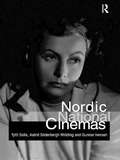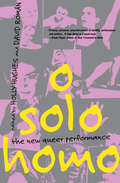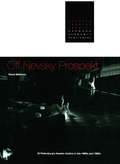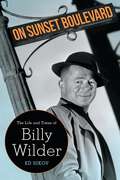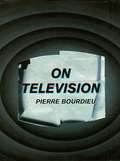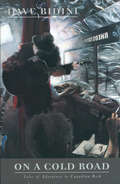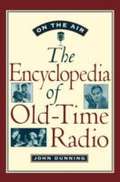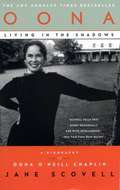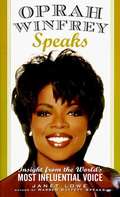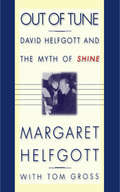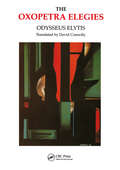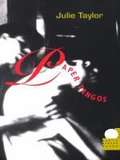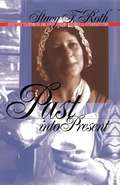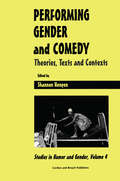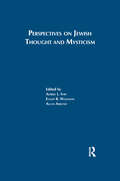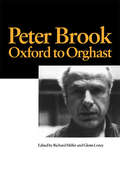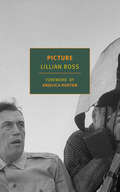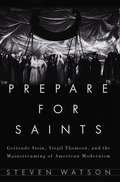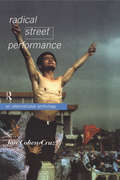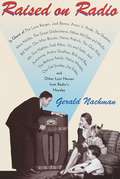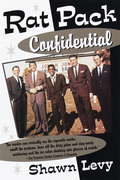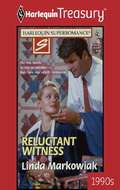- Table View
- List View
Nordic National Cinemas
by Gunnar Iverson Astrid Soderbergh Widding Tytti SoilaNordic National Cinemas explores the film histories and cultures of Denmark, Finland, Iceland, Norway and Sweden. The authors examine each country's domestic film production, social and political context and domestic audiences from the beginning of this century to the twentieth century.The authors not only explore the work of internationally renowned figures such as Mauritz Stiller, Victor Sjostrom, Carl Dreyer and Ingmar Bergman, directors of such classics as Vampyr, Ordet, Wild Strawberries and Cries and Whispers, but also nationally important film makers such as August Blom, Bodil Ipsen, Lau Lauritzen and Nils Malmros, they also discuss contemporary film makers including Gabriel Axel, director of Babette's Feast, the Kaurismaki brothers, directors of The Match Factory Girl and The Leningrad Cowboys and the recently acclaimed Lars von Trier, director of Breaking the Waves.
O Solo Homo: The New Queer Performance
by Holly Hughes David Román“Fresh, funny, sad, and sexy . . . [A] diverse collection of good, honest, and soundly structured monologue writing” (David Drake, Obie Award–winning actor and playwright). O Solo Homo is a diverse, definitive, and hugely entertaining collection representing the cutting edge of queer solo performance. The pieces in O Solo Homo touch nerves that run deep—from sex, politics, community, and health to the struggles and joys of family, friends, and lovers. Peggy Shaw, of Split Britches, revisits how she learned to be butch. The late Ron Vawter, of the Wooster Group, juxtaposes the lives of two very different men who died of AIDS: diva filmmaker Jack Smith and Nixon crony Roy Cohn. Tim Miller, one of the NEA 4, surveys the landscape of gay desire before and after the advent of AIDS. And Carmelita Tropicana, the “national songbird of Cuba,” makes an unforgettable, hilarious return to Havana. “A funny, personal, powerful primer of identity, performance and politics. O Solo Homo is a must read.” —Paula Vogel, Pulitzer Prize–winning author of How I Learned to Drive “Naked passion, fiery intellect and dissatisfaction with the status quo mark all good performance art. This collection embodies those elements at their best. Each piece makes you sit up and listen.” —Jewelle Gomez, author of The Gilda Stories “O Solo Homo represents the most significant and vibrant cross-section of queer solo performance since the gospels. A must-have field guide for the amateur and professional alike. Ten thumbs up!” —The Five Lesbian Brothers
Off Nevsky Prospekt: St Petersburg's Theatre Studios in the 1980s and 1990s
by Elena MarkovaOff Nevsky Prospekt is the first study to be published in English of the exceptionally rich and diverse theatre studio movement which has flourished in St Petersburg during the 1980s and '90s. Professor Markova charts the development of the theatre studios - from their beginnings as a reaction to the repressive atmosphere of the Soviet period and through the "theatre bacchanalia" of the Perestroika years. She then surveys today's vibrant scene, with analyses of key productions and interviews with many of the central figures, and describes how theatre studios have subverted the conventions of the past to create a new dialogue with the changing society from which their audience is drawn.
On Sunset Boulevard: The Life and Times of Billy Wilder
by Ed SikovOn Sunset Boulevard, originally published in 1998, describes the life of acclaimed filmmaker Billy Wilder (1906-2002), director of such classics as Sunset Boulevard, The Lost Weekend, The Seven Year Itch, and Sabrina. This definitive biography takes the reader on a fast-paced journey from Billy Wilder's birth outside of Krakow in 1906 to Vienna, where he grew up, to Berlin, where he moved as a young man while establishing himself as a journalist and screenwriter, and triumphantly to Hollywood, where he became as successful a director as there ever was.Double Indemnity, Sunset Boulevard, Some Like It Hot, and The Apartment"Wilder's cinematic legacy is unparalleled. Not only did he direct these classics and twenty-one other films, he co-wrote all of his own screenplays. Volatile, cynical, hilarious, and driven, Wilder arrived in Hollywood an all-but-penniless refugee who spoke no English. Ten years later he was calling his own shots, and he stayed on top of the game for the next three decades. Wilder battled with Humphrey Bogart, Marilyn Monroe, Bing Crosby, and Peter Sellers; kept close friendships with William Holden, Audrey Hepburn, Jack Lemmon, and Walter Matthau; amassed a personal fortune by way of blockbuster films and shrewd investments in art (including Picassos, Klees, and Mir's); and won Oscars--yet Wilder, ever conscious of his thick accent, always felt the sting of being an outsider.On Sunset Boulevard traces the course of a turbulent but fabulous life, both behind the scenes and on the scene, from Viennese cafes and Berlin dance halls in the twenties to the Hollywood soundstages of the forties and the on-location shoots of the fifties and sixties. Crammed with Wilder's own caustic wit, On Sunset Boulevard reels out the story of one of cinema's most brilliant and prolific talents.
On Television
by Pierre BourdieuBourdieu had long been concerned with the role of television in cultural and political life when he bypassed the political and commercial control of the television networks and addressed his country's viewers from the television station of the College de France. "On Television," which expands on that lecture, not only describes the limiting and distorting effect of television on journalism and the world of ideas, but offers the blueprint for a counterattack.
On a Cold Road
by Dave BidiniDavid Bidini, rhythm guitarist with the Rheostatics, knows all too well what the life of a rock band in Canada involves: storied arenas one tour and bars wallpapered with photos of forgotten bands the next. Zit-speckled fans begging for a guitar pick and angry drunks chucking twenty-sixers and pint glasses. Opulent tour buses riding through apocalyptic snowstorms and cramped vans that reek of dope and beer. Brilliant performances and heart-sinking break-ups.Bidini has played all across the country many times, in venues as far flung and unalike as Maple Leaf Gardens in Toronto and the Royal Albert Hotel in Winnipeg. In 1996, when the Rheostatics opened for the Tragically Hip on their Trouble at the Henhouse tour, Bidini kept a diary. In On a Cold Road he weaves his colourful tales about that tour with revealing and hilarious anecdotes from the pioneers of Canadian rock - including BTO, Goddo, the Stampeders, Max Webster, Crowbar, the Guess Who, Triumph, Trooper, Bruce Cockburn, Gale Garnett, and Tommy Chong - whom Bidini later interviewed in an effort to compare their experiences with his. The result is an original, vivid, and unforgettable picture of what it has meant, for the last forty years, to be a rock musician in Canada.From the Trade Paperback edition.
On the Air: The Encyclopedia of Old-Time Radio
by John DunningNow long out of print, John Dunning's Tune in Yesterday was the definitive one-volume reference on old-time radio broadcasting. Now, in On the Air, Dunning has completely rethought this classic work, reorganizing the material and doubling its coverage to provide a richer and more informative account of radio's golden age. Here are some 1,500 radio shows presented in alphabetical order. The great programs of the '30s, '40s, and '50s are all here--Amos & Andy, Fibber Me Gee and Molly, The Lone Ranger, Major Bowes' Original Amateur Hour, and The March of Time, to name only a few. For each, Dunning provides a complete broadcast history, with the time- slot, the network, and the name of the show's sponsors. He lists major cast members, announcers, producers, directors, writers, and sound effects people-even the show's theme song. There are also umbrella entries, such as "News Broadcasts," which features an engaging essay on radio news, with capsule biographies of major broadcasters like Lowell Thomas and Edward R. Murrow. Equally important, Dunning provides a fascinating account of each program, taking us behind the scenes to capture the feel of the performance, such as the ghastly sounds of Lights Out (a horror drama where heads rolled and bones crunched), and providing engrossing biographies of the main people involved in the show. A wonderful read for everyone who loves old-time radio, On the Air is a must purchase for all radio hobbyists and anyone interested in 20th-century American history. It is an essential reference work for libraries and radio stations. JOHN DUNNING is a popular mystery novelist, author of The Bookman's Wake and Booked to Die. He lives in Aurora, Colorado.
Oona Living in the Shadows: A Biography of Oona O'Neill Chaplin
by Jane ScovellA biography of the life of the enigmatic daughter of Eugene O'Neill & wife of Charlie Chaplin, encompassing her intriguing family members & circle of friends.
Oprah Winfrey Speaks: Insight from the World's Most Influential Voice
by Janet LoweOprah is not just another famous entertainer. She's a friend to the world and a role model for all people, of any gender, of any race, of any group. Before reading Oprah Winfrey Speaks, here are some guidelines on what to expect from the book. It will not be focused on the well-known details of Oprah's life and rise to stardom, although this information is presented to give the reader a better perspective on the comments. Rather, the book emphasizes the lessons that Winfrey has learned along the way--lessons many of us can profit from. Oprah has taught us a lot, and I've tried to capture as much of that wisdom as possible.
Out of Tune: David Helfgott and the Myth of Shine
by Margaret Helfgott Tom Gross"The Academy Award winning film Shine made pianist David Helfgott a household name. While purporting to be a true story, the movie is actually full of fabrications. Now for the first time, Margaret, David Helfgott's eldest sister, who knows him better than anyone from their early years, sets the record straight. Dispelling the many untruths propagated by the movie, Margaret tells the real story of her extraordinary brother, of a life, a career, and a legacy that will remain forever... Out Of Tune."--BOOK JACKET. Title Summary field provided by Blackwell North America, Inc. All Rights Reserved.
Oxopetra Elegies
by David Connolly Odysseas ElytesFirst Published in 1997. 'Geographically speaking 'Oxopetra' is a promontory on the island of Astypalaea. It is the 'other rock'. For me, it is the farthest point of the land in the sea, the farthest point of our era in another era, and the farthest point of my life in death... Odysseus Elytis.' Odysseus Elytis was born in Crete in 1911 and published the first of his poems in 1935. He was influenced by French Surrealism and travelled widely, and in post-war years lived in France with many other leading poets and artists of his generation. In 1979 he was awarded the Nobel Prize of Literature. The Oxopetra Elegies is a recent collection and is considered by many Greek critics to contain some of the finest and most important poems he has ever written. The Greek Poetry Archive features monographs on key modern Greek poets, from the nineteenth century to the present, and a bilingual collection of their poetry translated into English.
Paper Tangos
by Julie TaylorTango. A multidimensional expression of Argentine identity, one that speaks to that nation's sense of disorientation, loss, and terror. Yet the tango mesmerizes dancers and audiences alike throughout the world. In Paper Tangos, Julie Taylor--a classically trained dancer and anthropologist--examines the poetics of the tango while describing her own quest to dance this most dramatic of paired dances.Taylor, born in the United States, has lived much of her adult life in Latin America. She has spent years studying the tango in Buenos Aires, dancing during and after the terror of military dictatorships. This book is at once an account of a life lived crossing the borders of two distinct and complex cultures and an exploration of the conflicting meanings of tango for women who love the poetry of its movement yet feel uneasy with the roles it bestows on the male and female dancers. Drawing parallels among the violences of the Argentine Junta, the play with power inherent in tango dancing, and her own experiences with violence both inside and outside the intriguing tango culture, Taylor weaves the line between engaging memoir and insightful cultural critique. Within the contexts of tango's creative birth and contemporary presentations, this book welcomes us directly into the tango subculture and reveals the ways that personal, political, and historical violence operate in our lives.The book's experimental design includes photographs on every page, which form a flip-book sequence of a tango. Not simply a book for tango dancers and fans, Paper Tangos will reward students of Latin American studies, cultural studies, anthropology, feminist studies, dance studies, and the art of critical memoir.
Past into Present: Effective Techniques for First-Person Historical Interpretation
by Stacy F. RothThe portrayal of historical characters through interactive dramatization or role-playing is an effective, albeit controversial, method used to bring history to life at museums, historic sites, and other public venues. Stacy Roth examines the techniques of first-person interpretation to identify those that have been most effective with audiences while allowing interpreters to maintain historical fidelity.
Performing Gender and Comedy: Theories, Texts and Contexts
by Hengen SFirst Published in 1998. Routledge is an imprint of Taylor & Francis, an informa company.
Perspectives on Jewish Though
by IvryFirst Published in 1998. Routledge is an imprint of Taylor & Francis, an informa company.
Peter Brook: Oxford To Orghast To India
by R. Helfer G. LoneyPeter Brook is known internationally as a theatre visionary, and a daring experimenter on the cutting-edge of performance and production. This book concentrates on Brook's early years, and his innovative achievements in opera, television, film, and the theatre. His productions are viewed separately, in chronological order, suggesting Brook's developing and changing interests. The authors include thought-provoking interviews with Brook (and with numerous outstanding artists who have worked with him) and bring to the reader penetrating critiques of Brook's theories and practices as a man of the theatre.
Picture: Rodando Con Huston (Modern Library)
by Lillian RossA classic look at Hollywood and the American film industry by The New Yorker's Lillian Ross, and named one of the "Top 100 Works of U.S. Journalism of the Twentieth Century."Lillian Ross worked at The New Yorker for more than half a century, and might be described not only as an outstanding practitioner of modern long-form journalism but also as one of its inventors. Picture, originally published in 1952, is her most celebrated piece of reportage, a closely observed and completely absorbing story of how studio politics and misguided commercialism turn a promising movie into an all-around disaster. The charismatic and hard-bitten director and actor John Huston is at the center of the book, determined to make Stephen Crane’s The Red Badge of Courage—one of the great and defining works of American literature, the first modern war novel, a book whose vivid imagistic style invites the description of cinematic—into a movie that is worthy of it. At first all goes well, as Huston shoots and puts together a two-hour film that is, he feels, the best he’s ever made. Then the studio bosses step in and the audience previews begin, conferences are held, and the movie is taken out of Huston’s hands, cut down by a third, and finally released—with results that please no one and certainly not the public: It was an expensive flop. In Picture, which Charlie Chaplin aptly described as “brilliant and sagacious,” Ross is a gadfly on the wall taking note of the operations of a system designed to crank out mediocrity.
Please, Please, Please
by Rachel VailBest friends stick together in Rachel Vail's Friendship Ring series! Growing up is never easy. But when things get tough, you can always count on your best friends. CJ, Olivia, Morgan and Zoe know one thing for sure: they'll always have each other! CJ has been taking ballet for years. But doing ballet means lots of practice and missing out on stuff like soccer with her friends and the big seventh-grade field trip. On top of that, the friendship ring she bought with Zoe is causing trouble in the group. CJ is sure that quitting ballet will make things better with her friends, but it would devastate her mother. All CJ wants is a chance to be happy without hurting anyone else, but is that possible?
Please, Please, Please (The Friendship Ring Series #2)
by Rachel VailTwelve-year-old CJ, an accomplished ballet student, struggles with her conflicting desires to continue her ballet study and please her mother or to quit ballet and finally be like all the other kids in school.
Prepare for Saints: Gertrude Stein, Virgil Thomson, and the Mainstreaming of American Modernism
by Steven WatsonPerhaps the oddest and most influential collaboration in the history of American modernism was hatched in 1926, when a young Virgil Thomson knocked on Gertrude Stein's door in Paris. Eight years later, their opera Four Saints in Three Acts became a sensation--the longest-running opera in Broadway history to date and the most widely reported cultural event of its time. Four Saints was proclaimed the birth of a new art form, a cellophane fantasy, "cubism on stage." It swept the public imagination, inspiring new art and new language, and defied every convention of what an opera should be. Everything about it was revolution-ary: Stein's abstract text and Thomson's homespun music, the all-black cast, the costumes, and the com-bustible sets. Moving from the Wadsworth Atheneum to Broadway, Four Saints was the first popular modernist production. It brought modernism, with all its flamboyant outrage against convention, into the mainstream. This is the story of how that opera came to be. It involves artists, writers, musicians, salon hostesses, and an underwear manufacturer with an appetite for publicity. The opera's success depended on a handful of Harvard-trained men who shaped America's first museums of modern art. The elaborately intertwined lives of the collaborators provide a window onto the pioneering generation that defined modern taste in America in the 1920s and 1930s. A brilliant cultural historian with a talent for bringing the past to life, Steven Watson spent ten years researching and writing this book, interviewing many of the collaborators and performers. Prepare for Saints is the first book to describe this pivotal moment in American cultural history. It does so with a spirit and irreverence worthy of its subject.NOTE: This edition does not include photographs.
Pure Drivel
by Steve MartinFrom a wildly imaginative meditation on who Lolita would be at age 50 to a skit entitled "I Love Loosely," in which Lucy and Ricky Ricardo play the parts of Hillary and President Clinton, this collection by comic genius Martin is both hilariously funny and intelligent in its skewering of the topic at hand.
Radical Street Performance: An International Anthology
by Jan Cohen-CruzRadical Street Performance is the first volume to collect together the fascinating array of writings by activists, directors, performers, critics, scholars and journalists who have documented street theatre around the world. More than thirty essays explore the myriad forms this most public of performances can take: * agit-prop * invisible theatre * demonstrations and rallies * direct action * puppetry * parades and pageants * performance art * guerrilla theatre * circuses These essays look at performaces in Europe, Africa, China, India and both the Americas. They describe engagement with issues as diverse as abortion, colonialism, the environment and homophobia, to name only a few. Introduced by editor Jan Cohen-Cruz, the essays are organized into thematic sections: Agitating; Witnessing; Involving; Imagining; and Popularizing. Radical Street Performance is an inspiring testimony to this international performance phenomenon, and an invaluable record of a form of theatre which continues to flourish in a televisual age.
Raised on Radio
by Gerald NachmanFor everybody "raised on radio"--and that's everybody brought up in the thirties, forties, and early fifties--this is the ultimate book, combining nostalgia, history, judgment, and fun, as it reminds us of just how wonderful (and sometimes just how silly) this vanished medium was. Of course, radio still exists--but not the radio of The Lone Ranger and One Man's Family, of Our Gal Sunday and Life Can Be Beautiful, of The Goldbergs and Amos 'n' Andy, of Easy Aces, Vic and Sade, and Bob and Ray, of The Shadow and The Green Hornet, of Bing Crosby, Kate Smith, and Baby Snooks, of the great comics, announcers, sound-effects men, sponsors, and tycoons.In the late 1920s radio exploded almost overnight into being America's dominant entertainment, just as television would do twenty-five years later. Gerald Nachman, himself a product of the radio years--as a boy he did his homework to the sound of Jack Benny and Our Miss Brooks--takes us back to the heyday of radio, bringing to life the great performers and shows, as well as the not-so-great and not-great-at-all. Nachman analyzes the many genres that radio deployed or invented, from the soap opera to the sitcom to the quiz show, zooming in to study closely key performers like Benny, Bob Hope, and Fred Allen, while pulling back to an overview that manages to be both comprehensive and seductively specific.Here is a book that is generous, instructive, and sinfully readable--and that brings an era alive as it salutes an extraordinary American phenomenon.From the Hardcover edition.
Rat Pack Confidential: Frank, Dean, Sammy, Peter, Joey and the Last Great Show Biz Party
by Shawn LevyFor the first time, the full story of what happened when Frank brought his best pals to party in a land called VegasJanuary 1960. Las Vegas is at its smooth, cool peak. The Strip is a jet-age theme park, and the greatest singer in the history of American popular music summons a group of friends there to make a movie. One is an insouciant singer of Italian songs, ex-partner to the most popular film comedian of the day. One is a short, black, Jewish, one-eyed, singing, dancing wonder. One is an upper-crust British pretty boy turned degenerate B-movie star actor, brother-in-law to an ascendant politician. And one is a stiff-shouldered comic with the quintessential Borscht Belt emcee&’s knack for needling one-liners. The architectonically sleek marquee of the Sands Hotel announces their presence simply by listing their names: FRANK SINATRA. DEAN MARTIN. SAMMY DAVIS, JR. PETER LAWFORD. JOEY BISHOP. Around them an entire cast gathers: actors, comics, singers, songwriters, gangsters, politicians, and women, as well as thousands of starstruck everyday folks who fork over pocketfuls of money for the privilege of basking in their presence. They call themselves The Clan. But to an awed world, they are known as The Rat Pack.They had it all. Fame. Gorgeous women. A fabulouse playground of a city and all the money in the world. The backing of fearsome crime lords and the blessing of the President of the United States. But the dark side–over the thin line between pleasure and debauchery, between swinging self-confidence and brutal arrogance–took its toll. In four years, their great ride was over, and showbiz was never the same. Acclaimed Jerry Lewis biographer Shawn Levy has written a dazzling portrait of a time when neon brightness cast sordid shadows. It was Frank&’s World, and we just lived in it.
Reluctant Witness: Robert Taylor, Hollywood, and Communism
by Linda MarkowiakReluctant Witness: Robert Taylor, Hollywood, Communism is the exhaustive biography of the life of Golden Era movie star, Robert Taylor. He was called "The Man With The Perfect Profile," and some considered him the most beautiful man to ever grace the movie world. Yet there was more to him, lots more. He was complicated. He saw history--movie history and world history--and he was part of both.
